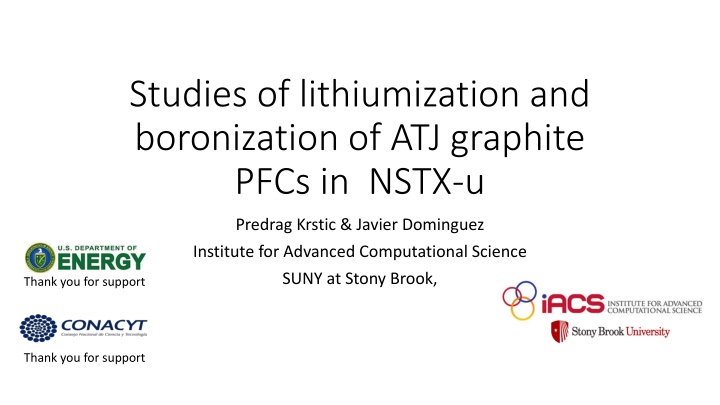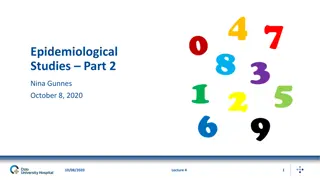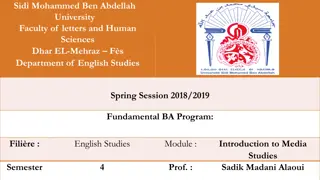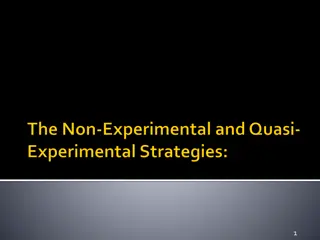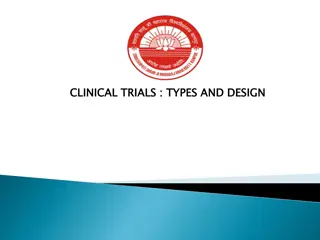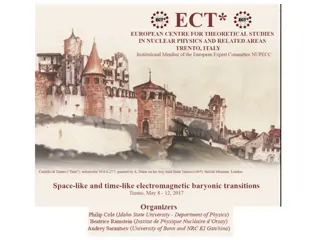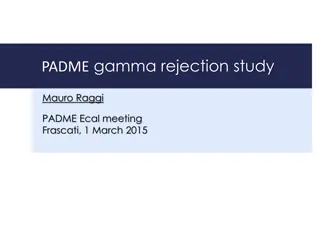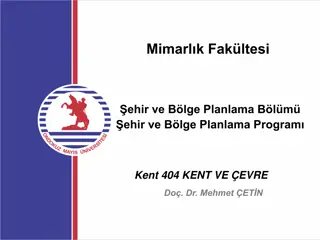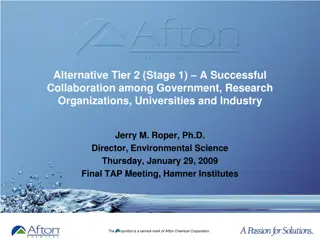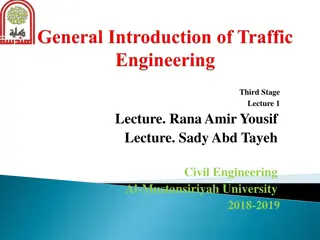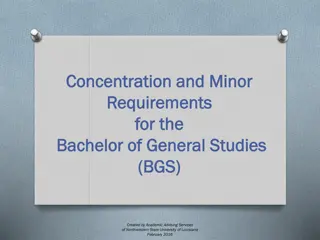Studies of Lithiumization and Boronization in NSTX-U
Calculating chemistry, retention of D, and chemical sputtering of B-C-O-D, Li-C-O-D, and B-Li-C-O-D surfaces using atomistic approaches. Exploring fundamental processes in time and space. Utilizing classical molecular dynamics and quantum-classical molecular dynamics for verification. Addressing challenges in classical mechanics for B-Li-C-O-D problems. Investigating effects of B and Li deposition on carbon tiles, deuterium retention, and chemical sputtering. Analyzing impurities and intermolecular interactions of liquid metals with high-Z substrates. Planning to feed mesoscopic dynamics with obtained atomistic data and proceed to continuum dynamics through XGC-DEGASII.
Download Presentation

Please find below an Image/Link to download the presentation.
The content on the website is provided AS IS for your information and personal use only. It may not be sold, licensed, or shared on other websites without obtaining consent from the author.If you encounter any issues during the download, it is possible that the publisher has removed the file from their server.
You are allowed to download the files provided on this website for personal or commercial use, subject to the condition that they are used lawfully. All files are the property of their respective owners.
The content on the website is provided AS IS for your information and personal use only. It may not be sold, licensed, or shared on other websites without obtaining consent from the author.
E N D
Presentation Transcript
Studies of lithiumization and boronization of ATJ graphite PFCs in NSTX-u Predrag Krstic & Javier Dominguez Institute for Advanced Computational Science SUNY at Stony Brook, Thank you for support Thank you for support
What are we doing? We calculate chemistry, retention of D, chemical sputtering of a B-C-O-D, Li-C-O-D and B-Li-C-O-D surface. Why? To understand the fundamental processes in the windows of time&space when these actually happen. Here we are: atomistic approaches Most processes end in less than 100 ps . Cumulative processes of D require longer time. Flux: 1025m-2s-1 means I D atom at 10 nm2 each 10 ns. However each impact atom changes the target surface the dynamical surface How do we do it? Classical molecular dynamics with REAXFF Verified by quantum-classical molecular dynamics (need exoscale computing resources Validated by NSTX-U and lab experiments whenever available
Why is classical mechanics not good for the problems with B-Li-C-O-D.? It is good for W-D or C-D problems. The answer lays in different electronegativity of the atoms in B-Li-C-O-D mixture This means polarization and charges of the atoms in mixture dynamically change with change of the coordinates of atoms, in particular during the D impact cascade. Changes in electronic cloud can be handled only by quantum mechanics. We use SCC-DFTB approximation to DFT which is nominally about 1000 Times faster than DFT, still 1000 times slower than classical mechanics, and REAXFF: Intermediate solution: combination of classical mechanics and semi-empirical QM calibrated method (Electronegativity Equalization, EEM) which recalculate charges each time step of classical mechanics. This is about 100 times slower than classical mechanics. How uncertainty propagates through scales? As these computational codes have limits, so do the experimental and metrology tools. Key is to fill the gap one with the other and identify regions of validation in combination with the data uncertainty and more importantly identify appropriate and strategic problems to solve
Effects of B and Li deposited onto the carbon tiles. In particular: 1. Effects of deuterium accumulation 2. Effects of varying concentration of B and Li DONE! Onto deuterium retention and chemical sputtering of the surface. Compare with experimental data form MAPP and lab. Effects of impurities, in particular of O and its derivate (O2, H2O) at D recycling and erosion In liquid Li on carbon and high-Z substrates. Compare with experimental data. IN WORK! Determine intermolecular interactions of liquid metals (Li, Sn, Ga) with high-Z substrate and model the wetting. Effects of temperature and impurities on the wetting of the liquid metals, as well as on the trapping and release. To feed the mesoscopic dynamics (KMC) with the obtained atomistic data and to continuum dynamics through XGC-DEGASII. LATER!
Some achieved results A) Bonding and retention chemistry in boronized and oxidized surfaces Percentage of D bonds with constituents of the deuter-ated BCO surface as function of D accumulated con-centration (left axis). Total retention per impact of D (%) on BCOD and LiCOD (right axis). (a) O1s, (b) C1s, and (c) B1s XPS spectra using MAPP with boronized ATJ graphite for various days of deuterium plasma exposure. Bonds of (a) O, (b) C, and (c) B to other constituents in the BCOD as a function of D concentration.
1.0 1.0 C) Sputtering of BCO as function of D impact energy Without O 0.8 0.8 Total Carbon Ejection per D (%) 0.6 0.6 0.4 0.4 5 eV 0.2 0.2 0.0 0.0 LiBC +10% B BC +5% Li +5% B +10% Li LiC Surface configuration 1.0 1.0 Carbon Total 0.8 0.8 With O Ejection per D (%) 0.6 0.6 0.4 0.4 0.2 0.2 5 eV 0.0 0.0 BCO LiCO LiBCO +10% B +5% Li +10% Li +5% B Surface configuration Sputtered molecules, upon D saturation Sputtering in various configurations
B) Comparison of retention chemistry and sputtering in lithiated and boronized surfaces 1.0 1.0 5 eV Reaxff 0.8 0.8 X=Li, carbon X=Li, total Ejection yield per D (%) 0.6 0.6 0.4 0.4 0.2 0.2 X=B, carbon X=B, total 0.0 0.0 C C XC XC XCO XCO CO CO Surface configuration Total and C ejection yield per D for various surfaces configurations Bonding of D to various constituents of the surface. Noncumulative case at 5 eV D.
CONCLUSIONS: Outlook forward hydrogen retention and erosion in PMI. Approximate QM is adequate, however this has to be evaluated to tens of thousands of trajectories for reducing statistical error and even for correct phenomenology. Going with QM over DFT for PMI systems might be not feasible in next 10 years systems. Improved classical potentials, based on multiple neighbor QM calculations are the key for next phase of the NSTX-U atomistic modeling research, especially for metals. Checking DFT-fitted potentials by the methods of quantum computational chemistry beyond DFT is doable with current computational power, leading to acceptable results, which need Experimental verification= Quality control. Processing speed for extension of atomistic MD to longer times, meeting mesoscale. Algorithmic development. Bringing together the various scales of PMI and plasma is the fundamental multisdisciplinary question, covering plasma science, surface science, atomic physics, computer science and applied mathematics. The main weight in the science of integration of fusion plasma and its interfacial surface boundaries is carried by PMI because 1) the basic PMI phenomenology evolves much faster than the plasma time scale, and 2) it evolves through wider range of the scales, which partially overlap with the scale of plasmas. The PMI has to be understood and parameterized at nanoscale before integrating it with plasma at the same footing at micro- scale. PMI chemistry in NSTX-U requires QM in form of QCMD or advanced CMD+QM combinations to describe correctly both Thank you!
D) Retention chemistry and sputtering for Li-B-C-O-D 0.6 0.6 C-D Li-D Total 0.5 0.5 Li-B-C-D 100 100 Ejection yield per D (%) 0.4 0.4 0.3 0.3 80 80 Deuterium Lithium Boron Oxygen Carbon 0.2 0.2 20% B 20% Li 20 % B D bonds (%) 0.1 0.1 60 60 0.0 0.0 4 4 12 12 % of D retained 1.0 1.0 20 20 Li-B-C-O-D 0.8 0.8 C-D Li-D Total Ejection yield per D (%) 0.6 0.6 0 0 4 4 8 8 12 12 16 16 % of D accumulated 0.4 0.4 This is material mix of 5 constituents 5 eV impact of D Oxygen gets dominant in retention chemistry (over B) once there is D accumulated 0.2 0.2 0.0 0.0 4 4 12 12 % of D accumulated
